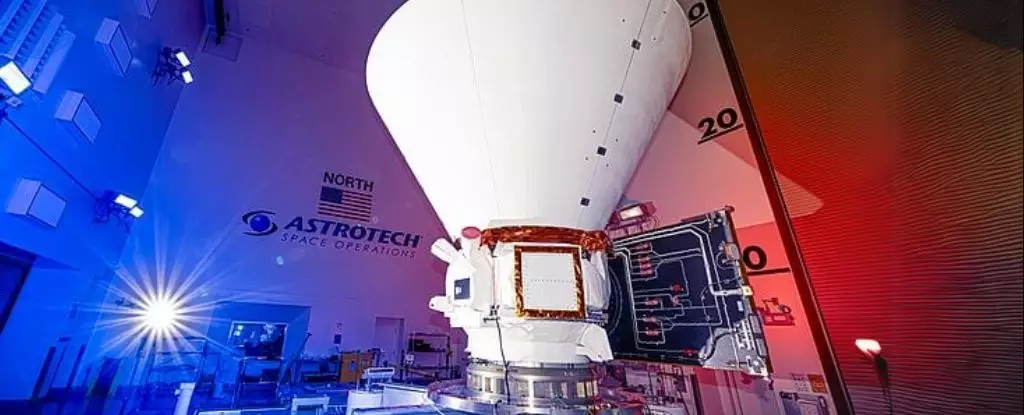The Spectro-Photometer for the History of the Universe, Epoch of Reionization, and Ices Explorer, or SPHEREx for short, represents an extraordinary leap into the realm of astrophysics and cosmology. Designed by NASA, this cutting-edge infrared space telescope aims to illuminate the dark corners of our Universe, offering profound insights into cosmic history and celestial formation. Unlike its predecessors, SPHEREx combines state-of-the-art technology with an ambitious mission—an all-sky spectral survey that could redefine our understanding of everything from galaxy formation to the origins of water in the cosmos.
A Bold Vision for Cosmic Exploration
Launched under NASA’s Medium Explorer program in 2019, SPHEREx is not just another telescope; it’s a paradigm shift. Its mission encompasses several groundbreaking objectives: mapping the history of galaxy formation, probing the origins of water and organic molecules, and investigating the distribution of interstellar ices. The sheer audacity of these goals signals a new era in which we aren’t merely observing the Universe—we’re dissecting its essence to understand its origins, evolution, and eventual fate.
What sets SPHEREx apart is its advanced infrared spectroscopy technology. It operates in a wavelength range of 0.75 to 5.0 microns, far beyond the visible spectrum. This capability allows scientists to penetrate cosmic dust clouds that typically obscure light, granting unprecedented visibility into regions of star and planet formation that would otherwise remain shrouded in mystery.
A Revolutionary Approach to Data Collection
SPHEREx’s innovative approach to data collection is equally impressive. By scanning the entire sky four times over its two-year mission, the telescope aims to capture light from hundreds of millions of celestial objects, generating a detailed three-dimensional map of the cosmos. Unlike conventional filters that might restrict observations to narrow bands of wavelengths, SPHEREx employs “rainbow-tinted” filters. This technology gradually alters the wavelengths that are blocked, allowing the telescope to gather an exhaustive array of data.
The complexity of capturing light from such a wide spectrum cannot be understated. SPHEREx’s design strategically channels incoming light through two separate paths, each split into rows of three detectors. This results in an incredible 102 distinct hues captured in every exposure, providing detailed spectral data that could answer fundamental questions about the Universe’s formation.
Engineering Excellence and Anticipation
Since its inception, the SPHEREx project has been closely monitored by engineers at the Jet Propulsion Laboratory (JPL). Their diligent checks have confirmed the spacecraft’s robustness and operational readiness, crucial for successfully capturing sensitive infrared data. Recently, they celebrated a milestone: after an exhaustive cooling process, the instruments reached their operational temperature of approximately -210°C. This is vital, as any residual heat could significantly hinder the telescope’s ability to detect faint infrared signals.
Olivier Doré, the SPHEREx project scientist at Caltech and JPL, expressed excitement with the telescope’s initial performance, highlighting its precise focus and readiness to embark on its mission. This initial success lends credence to the assertion that SPHEREx will perform as expected, opening its metaphorical eyes to the vast, unexplored Universe.
The Scientific Community Awaits
As SPHEREx gears up for its full operational deployment scheduled for late April, the anticipation among astronomers and astrophysicists is palpable. The potential for discovery is immense; the mission promises to fill in gaps in our understanding of the Universe and possibly reshape existing theories. Scientists are eager to study this unprecedented three-dimensional cosmic map, hoping it will shed light on the conditions that led to galaxy formation and the distribution of water—an essential ingredient for life—as well as provide insights into the formation of stars and planets.
The Impact on Astrophysical Research
The significance of SPHEREx cannot be overstated. Beyond simply mapping the sky, it represents a holistic effort to address some of the most profound questions posed by cosmology. By investigating the origins of water and organic materials in our galaxy, SPHEREx could illuminate paths to understanding extraterrestrial life. Furthermore, its comprehensive data could challenge and refine existing models of the cosmic timeline, potentially leading to new discoveries that propel humanity’s knowledge of the Universe and our place within it.
The upcoming months promise to reveal the full capabilities of this groundbreaking observatory, setting the stage for a new chapter in astrophysical research and enhancing our comprehension of the Universe’s history, complexity, and future.


Leave a Reply